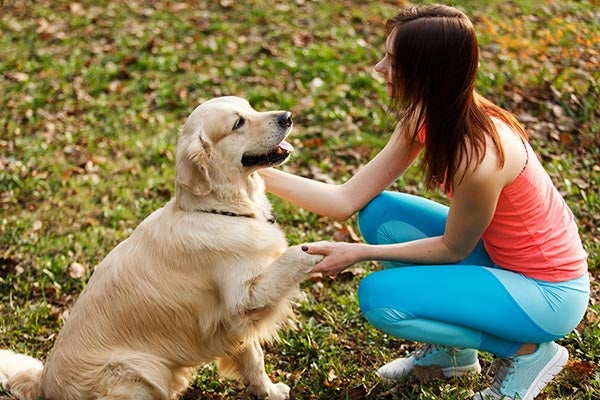Master Vital Commands: Effective Pet Training Made Easy
Reliable pet dog training is an essential element of responsible pet possession, and mastering essential commands works as the foundation for an unified relationship in between trainer and dog. Commands such as "Sit," "Remain," and "Come" not only help with communication but also promote a safer environment. Employing favorable reinforcement strategies can enhance the knowing experience, yet many encounter challenges in achieving consistent outcomes. Recognizing the nuances of canine behavior and the training procedure is vital; nevertheless, the journey to a trained pet dog usually offers unforeseen hurdles that require focus. What methods can genuinely transform these challenges into opportunities for growth?
Understanding Your Dog's Behavior
To comprehend the subtleties of reliable dog training, it is necessary to break down and analyze your dog's actions. Dog training. Recognizing the inspirations behind your pet dog's activities is vital; habits can stem from instinct, fear, exhilaration, or a wish for interest. By observing your pet in numerous situations, you can recognize patterns that may suggest underlying feelings or needs
For example, a canine that barks exceedingly might be revealing boredom, anxiousness, or a demand for social communication. Alternatively, a pet that displays devastating actions could be seeking stimulation or remedy for tension. Acknowledging these triggers permits you to customize your training strategy effectively.
Additionally, it is important to consider the dog's type attributes, as they can influence behavior significantly. Some breeds are predisposed to certain attributes, such as herding or securing reactions, which can influence their responses to particular stimulations.
Last but not least, uniformity in your actions to your pet dog's habits promotes a much better understanding between you and your family pet. This common understanding is foundational for building count on and facilitating a reliable training process that nurtures both behavioral adjustment and positive support.
Essential Commands to Educate
Teaching crucial commands is a basic facet of efficient canine training, providing the structure for a mannerly and responsive pet. These commands not just improve communication in between the owner and the dog yet additionally guarantee safety in numerous settings.
The most important commands include "Sit," which urges your pet dog to stay fixed and tranquil; "Stay," which enhances the idea of remaining in one area up until launched; and "Come," which is crucial for recalling your pet dog from potentially unsafe circumstances. "Down" educates pet dogs to lie down, promoting relaxation and control, while "Leave it" aids avoid pets from choosing up hazardous or go to the website undesirable items.
" Heel" is one more important command that motivates your dog to walk very closely beside you, boosting leash good manners. "No" offers as an essential boundary-setting command, assisting to deal with undesirable habits.
Training Strategies for Success
Effective canine training counts heavily on using a selection of methods that satisfy both the dog's learning style and the proprietor's training goals. One key strategy is favorable support, which entails gratifying desired actions with deals with, praise, or play. This method urges the pet to repeat those actions, fostering a solid bond in between owner and animal.

One more effective strategy is remote control training, where an unique noise, made by a remote control, marks the precise minute a pet performs a desired activity. This specific timing aids pet dogs associate the actions with the benefit, enhancing their understanding.
Uniformity is essential in all training techniques. Developing clear commands and maintaining the same signs aids the dog grasp assumptions extra quickly. Additionally, brief, appealing training sessions avoid dullness and boost retention.
Integrating socializing opportunities is also essential. Revealing dogs to various settings, people, and other pets aids them create self-confidence and flexibility.
Last but not least, perseverance plays a substantial duty in successful training - Dog training. Each dog discovers at their own rate, and recognizing this can result in a much more pleasurable training experience for both the proprietor and the canine. Applying these methods will establish the foundation for effective pet dog training
Usual Difficulties and Solutions
Regardless of the finest training methods, canine owners usually experience typical difficulties that can prevent progression. When household members make use of different commands for the very same behavior, it confuses the canine, leading to inconsistent feedbacks.

Additionally, some pets might display stubbornness or absence motivation. This can typically be dealt with by integrating positive reinforcement strategies, such as treats or appreciation, to urge preferred actions. Tailoring incentives to what your pet dog locates most motivating can considerably improve their engagement.
Lastly, concern or anxiousness can impede development in training. Identifying signs of stress and anxiety and changing the training rate accordingly is vital. Employing gradual exposure to been afraid stimulations can aid build confidence gradually, facilitating a much more efficient training experience.
Keeping Consistency and Persistence
Consistency and persistence are critical in pet training, as they create the structure for accomplishing lasting behavior changes. Pet dogs grow on routine and clear assumptions; hence, keeping a consistent technique in commands, benefits, and corrections is important.
Pets, much like try this website human beings, have differing learning speeds and may not realize commands right away. Positive support plays a crucial function here, fulfilling preferred behaviors and helping to cultivate a relying on partnership between the canine and trainer.
Verdict
Understanding important commands is essential to reliable dog training, promoting boosted interaction and strengthening favorable actions (Dog training). Ultimately, a trained pet not only shows great actions however also establishes self-confidence, contributing to an unified relationship in between the dog and its owner.